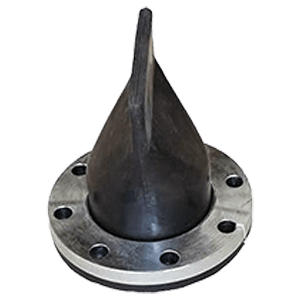1. Introduction: Why Duckbill Valves Matter
In fluid control systems, preventing backflow is critical. Whether you’re managing stormwater, sewage, industrial discharge, or even delicate medical devices, the integrity of your system depends on one essential principle: flow must go in only one direction. Among the many backflow prevention devices available, the duckbill valve stands out for its simple design, reliability, and ability to handle challenging environments.
The purpose of a duckbill valve is to allow fluids to pass through in the desired direction while automatically sealing shut to stop reverse flow, all without the need for mechanical moving parts. This makes it a favorite in harsh, remote, or maintenance-limited settings.
2. What Is a Duckbill Valve
A duckbill valve is a type of flexible check valve made primarily from rubber or synthetic elastomers. Its name comes from its distinctive shape — a flat, tapered end that resembles the beak of a duck. When pressure is applied from one side, the "beak" opens to allow fluid to pass. When pressure stops or reverses, the beak closes tightly.
Key features of duckbill valves:
-
Constructed from durable elastomers (e.g., neoprene, EPDM, nitrile)
-
No hinges, springs, or metal moving parts
-
Designed for low cracking pressure (minimal effort needed to open)
-
Resistant to corrosion and marine fouling
3. How a Duckbill Valve Works
The operation of a duckbill valve is based entirely on pressure differential:
-
Forward Flow: When fluid flows in the intended direction, the pressure pushes against the inside of the "beak," causing it to open.
-
Backflow Prevention: When pressure drops or reverses, the natural elasticity of the valve material forces the beak closed.
-
Seal Integrity: The tighter the backpressure, the tighter the beak seals, preventing leakage.
Because there are no metal parts to seize up or corrode, duckbill valves can operate continuously for years with minimal maintenance.
4. Primary Purpose of a Duckbill Valve
4.1 Preventing Backflow
The main reason to install a duckbill valve is to stop contaminated, unwanted, or damaging reverse flow from entering your system. This is essential for:
-
Sewage systems (preventing flooding and contamination)
-
Stormwater drains (blocking tidal or river backflow)
-
Industrial outfalls (avoiding recontamination from external sources)
4.2 Providing Maintenance-Free Operation
In locations where regular inspections aren’t practical — such as underwater pipelines or remote flood outfalls — duckbill valves operate passively, requiring no manual intervention.
4.3 Handling Harsh Environments
Duckbill valves excel in abrasive, corrosive, and debris-heavy fluids, making them ideal for wastewater, slurry, and marine applications.

5. Benefits of Using Duckbill Valves
-
Corrosion Resistance: Elastomer construction resists rust and chemical attack.
-
Debris Tolerance: Flexible lips push solids aside, reducing clogs.
-
Silent Operation: No slamming noises like metal check valves.
-
Energy Efficiency: Low pressure loss reduces pumping costs.
-
Simple Installation: Fits easily into existing pipe systems, flanged, or slip-on configurations.
6. Installation Best Practices
-
Choose the Right Material: Select elastomer type based on fluid composition (EPDM for wastewater, neoprene for seawater, etc.).
-
Correct Sizing: Ensure the valve matches the pipe diameter and expected flow rates.
-
Proper Orientation: Install with the beak facing the discharge direction.
-
Avoid Sharp Bends Before the Valve: This ensures smooth, even pressure.
-
Underwater Applications: Use flanged connections and marine-grade fasteners.
7. Maintenance Tips
-
Periodic Inspection: Check for wear, tears, or stiffening of the rubber.
-
Debris Clearing: While self-cleaning, occasional removal of trapped solids extends life.
-
Storage & Handling: If spares are kept, store in cool, dry areas away from UV light.

.png)
 en |
en |















